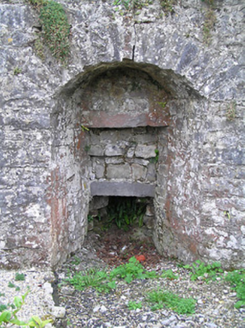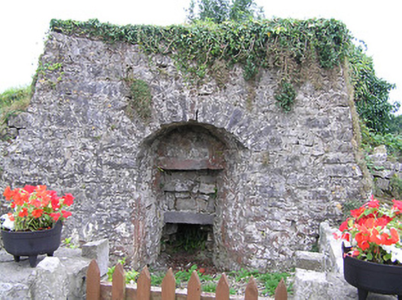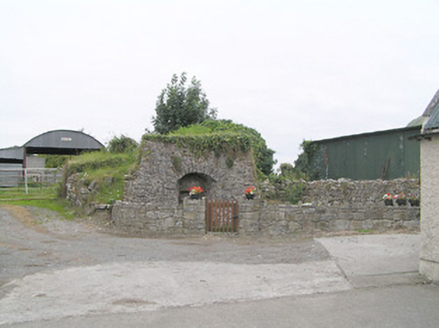Survey Data
Reg No
13307024
Rating
Regional
Categories of Special Interest
Social, Technical
Original Use
Kiln
Date
1800 - 1840
Coordinates
206624, 275502
Date Recorded
17/08/2005
Date Updated
--/--/--
Description
Freestanding single-bay lime kiln, built c. 1820, on a square-plan and tapers to top. Now out of use. Constructed of coursed limestone rubble. Segmental-headed arch to front (south), the former oven aperture, with dressed limestone voussoirs and cut stone lintel. Former loading bay to top of kiln, now overgrown. Earth embankment to rear (south). Set in a farmyard, with recent boundary walls, to the southeast of Cloondara.
Appraisal
The interesting survival of a former lime kiln, probably built in the early nineteenth-century, which is of technical merit. It is well-built using local limestone and is an appealing and unassuming element of the agricultural/industrial and social heritage of County Longford. The embankment to the rear was built to allow for the easy loading of limestone through an opening in the roof structure. Lime kilns appear to have come into popular use in Ireland during the eighteenth century and were once quite a common feature in the rural landscape. They were used to burn limestone to produce lime, which was used in construction/building as a mortar and a render, or to produce a fertilizer, which was then spread on agricultural land. Lime was also used for lime-washing buildings, particularly farm buildings, as it was regarded as a cleansing agent at the time. Small rural lime kilns started to go out of common usage during the late nineteenth-century with the advent of industrial-scale lime production facilities and improvements in the transport network, particularly the development of the railways.





